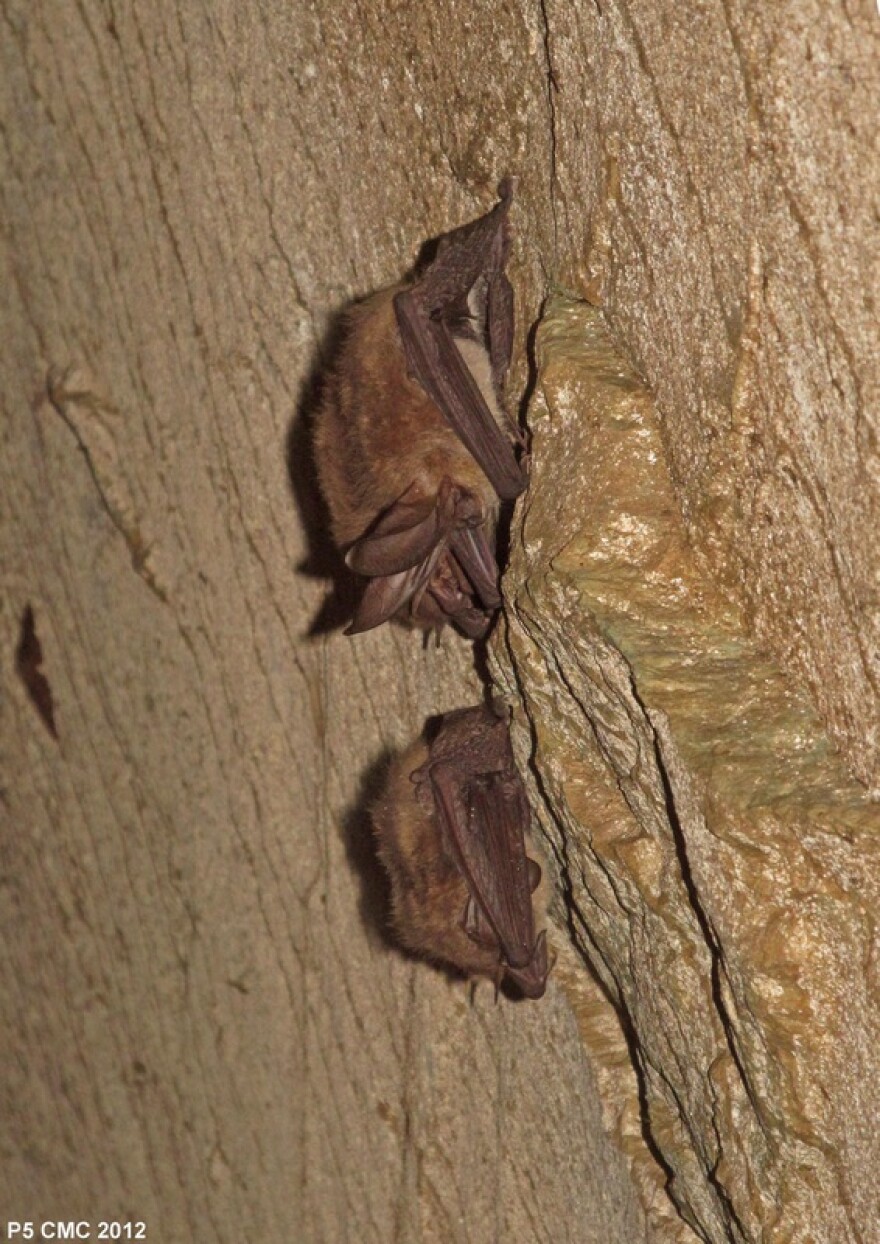Where bats hibernate, how warm or cold, and how dry or damp the environment is, are questions being asked as researchers and recreationists explore Montana’s caves.
Bat Specialist Dr. Cori Lausen with Wildlife Conservation Society Canada says some species of bats are facing potential extinction because of the White Nose Syndrome which has been decimating bat populations along the east coast, and is spreading west.
“It really is a race to save our bats, because we don’t know how much time we have to find out all this critical information. But we do know at this point, that it’s limited,” Lausen said White Nose Syndrome has made it to Ontario in Canada. They also have concerns about reports of the disease in Minnesota, right on the US-Canada border.
Lausen has studied bats in the North Fork Flathead River drainage in Montana, and just this past summer began surveying the caves of the Flathead River Valley on the north side of the border. She said this area is good for bat hunting because of the numerous cave formations in the area.
Zoologist Bryce Maxell with the Montana Natural Heritage Program said White Nose Syndrome invades bats while they’re roosting.
“Wakes them up because of the skin irritation, it’ll even eat holes through their wings, so it wakes them up during those periods, and when it wakes them up, they burn through critical fat supplies, and so they basically starve to death in the middle of the winter,” Maxell said it’s estimated that White Nose Syndrome has killed 6.7 million bats in the east.
Maxell said Montana is conducting a two pronged research effort. First, they’re monitoring bats roost sites in the summer, and the places they hibernate, or hibernacula, in the winter. They’re also using acoustic detectors to track and find different species of bats. He sais what’s coming out of this research is a more complex picture of what bats do.
Managers have partnered with cavers to collect some of the data from these often hard to reach caves.
One such club is the Bigfork High School Cave club sponsored by science and GIS mapping teacher Hans Bodenhamer. He said the club has discovered up to 6 previously undiscovered bat hibernacula.
“Which is really cool, I mean if White Nose Syndrome does make it this far, we’ve got an idea of what areas we really need to be careful with,” Bodenhamer said.
Sophomore Alexa Cornett said they collected data on bats and other information about caves from a trip this past weekend to Lewistown and White Sulphur Springs
“One of our biggest caves was where we had to take most of the data, and we were searching for bats is one of the things we were mostly searching for, and we were taking dirt samples for White Nose Syndrome, and another thing we look for in caves is graffiti,” Cornett said.
Junior Sarah Abbott said they’re using the information in class to build a map of the caves.
“We normally do the biology, the mineral, any bat signs, and also temperature of the cave too,” Abbott said.
Research is continuing into the winter to find the different characteristics of the bats hibernacula, compare the caves here to the caves in the east hit with White Nose Syndrome, and find out how vulnerable Montana’s bats are, and what, if anything, can be done.

